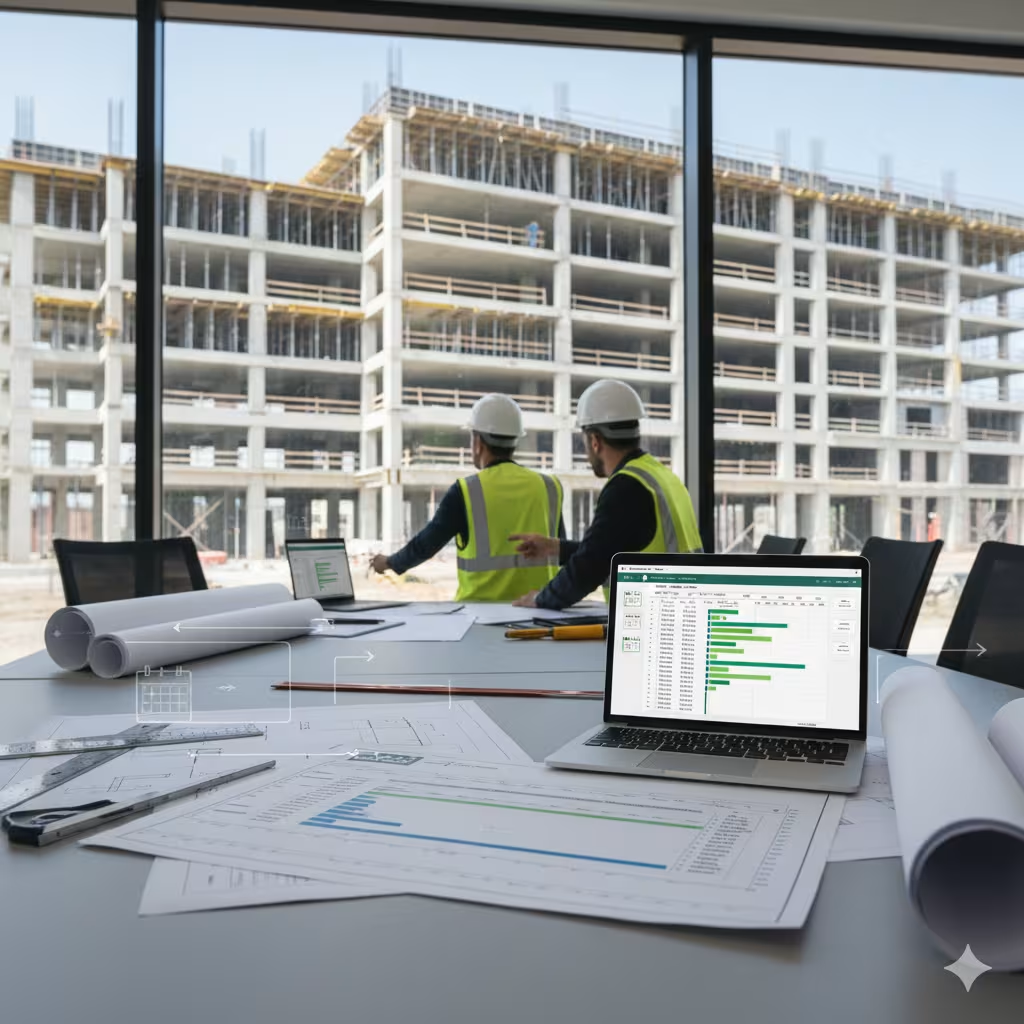Designing a Sustainable University Campus (2025)

Table of content
Universities operate like small cities: a single 20,000-student campus can consume 600 million–1 billion gal of water each year and emit CO₂ on par with a 30- to 50-MW gas plant. Designing them well is therefore a high-leverage climate action.
One wrong assumption in campus planning can derail your entire project. Learn How to avoid it
- Compact Academic Core – keep ≥70 % daily trips walkable (<400 m).
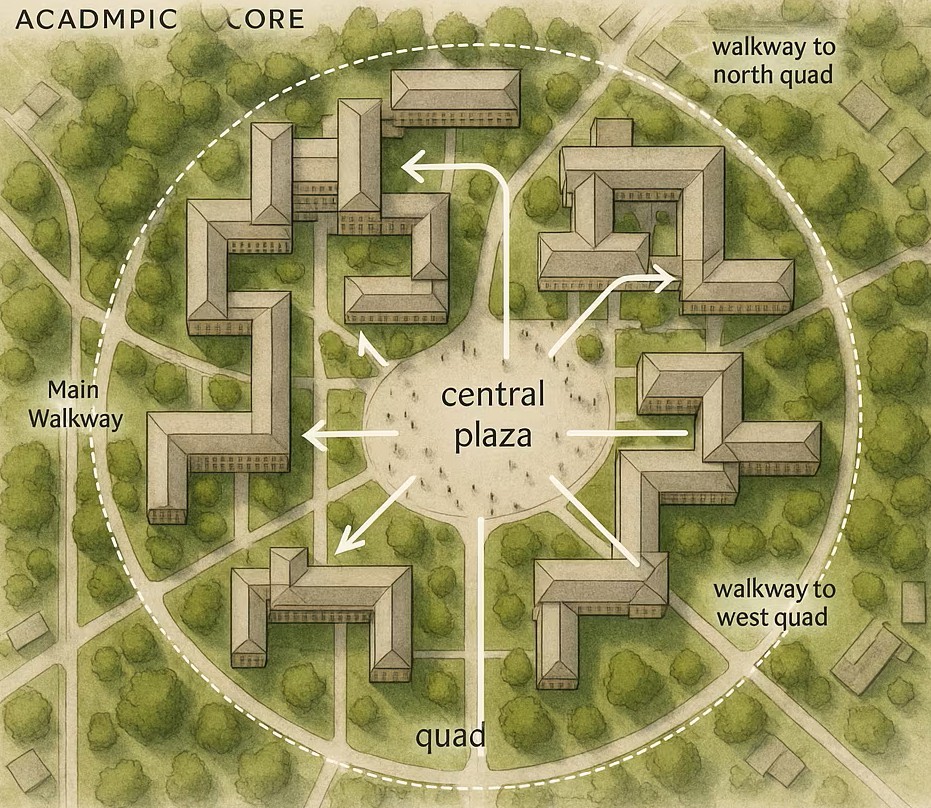
- Expansion “flex zones” at perimeter serviced by district energy spines.
- Blue-Green Networks – bioswales on every major walkway; ≥40 % tree canopy to cut ambient temperature 2–4 °C.
.avif)
- Resilience Corridors – redundant power + water loops run under central pedestrian boulevards; co-located maker-spaces act as community shelters.
Still confused? understand in detail
UBC’s conservation projects alone save 13 GWh electricity and 143,000 GJ natural gas every year—equivalent to shutting the campus for 2½ weeks.
- Dual-Loop Plumbing – black-water STP → tertiary treated reuse; design for 95 % reclamation (Epic Cleantec modules handle 1 M gal/day).
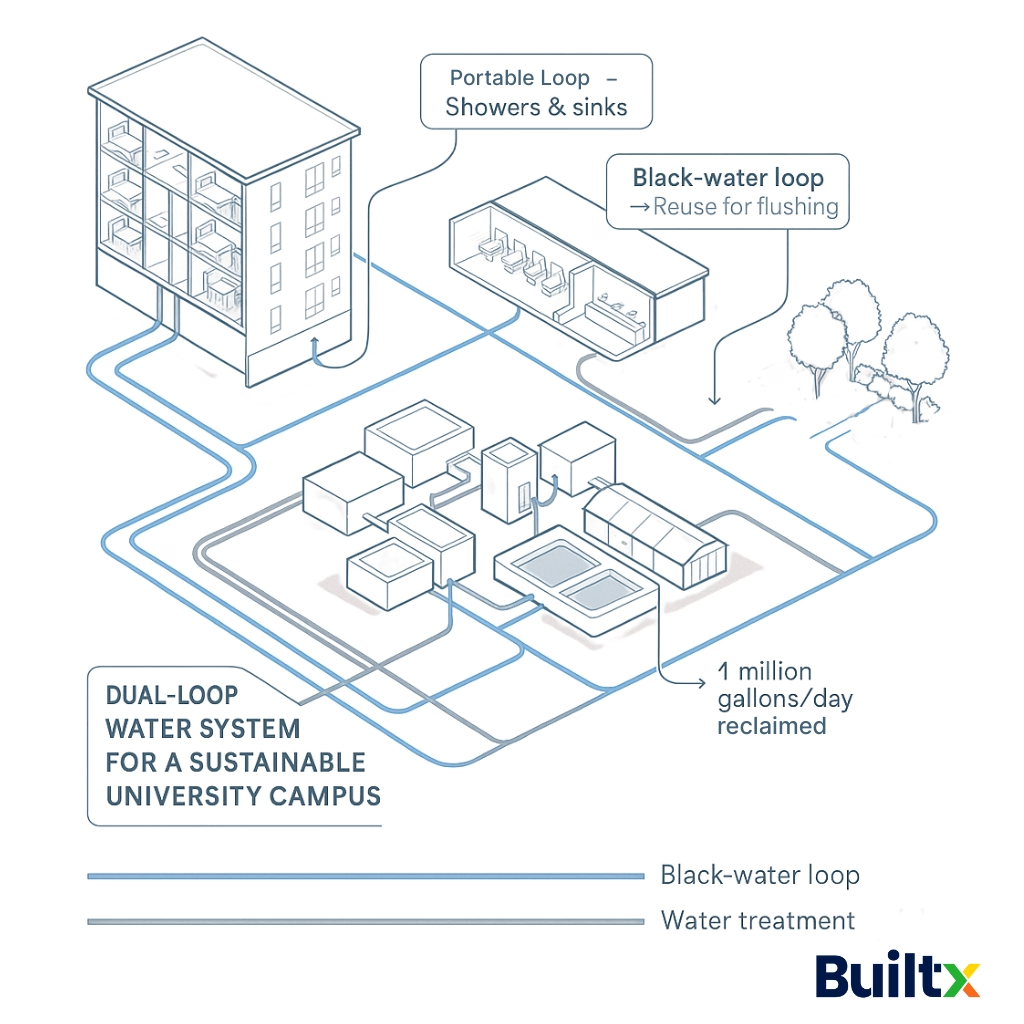
- Rain-to-Recharge – green roofs + underground cisterns sized for 80 mm storm; pervious roads recharge aquifers.
- Ultra-Low Fixtures – target ≤30 L/student/day (Warsaw achieved 26.6 L).
- Regional Low-Carbon Blocks (fly-ash, lime stabilised) cut embodied CO₂ 30–40 %.
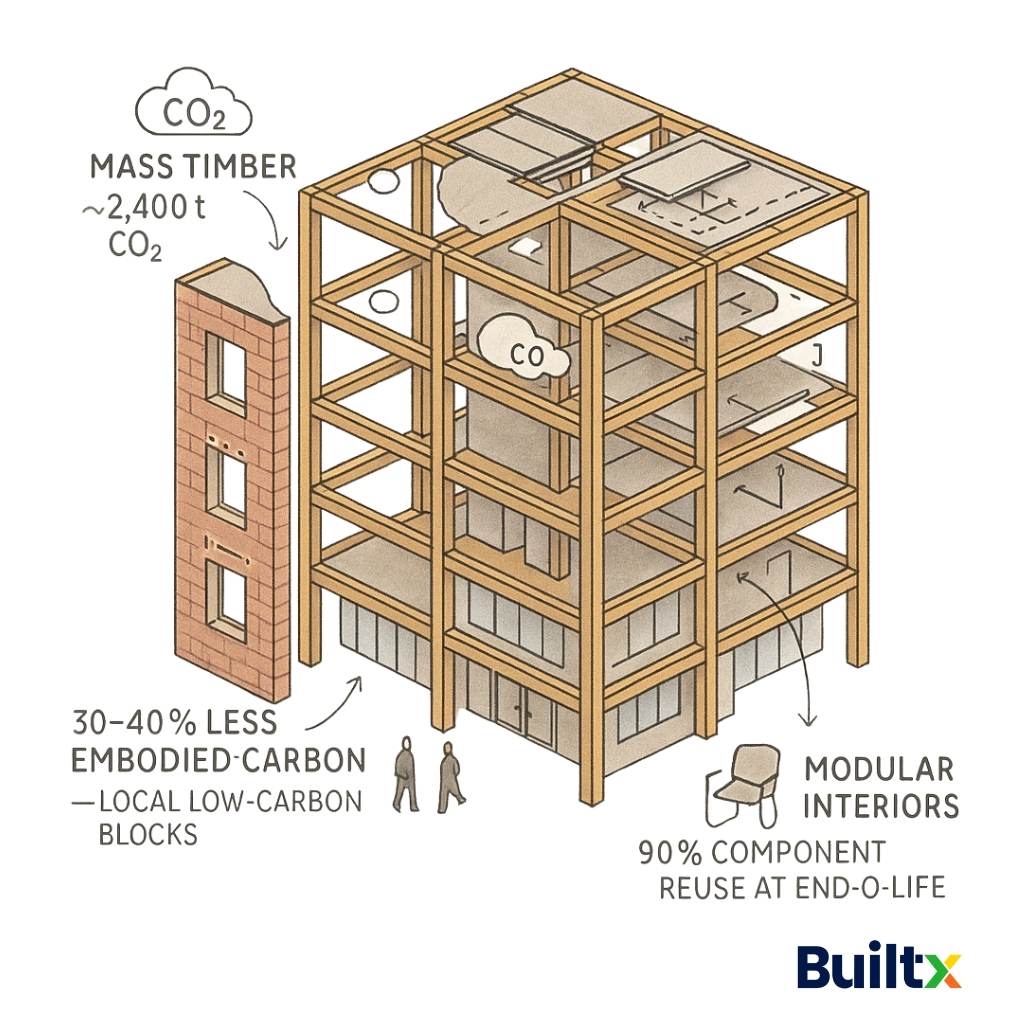
- Mass-Timber Academic Blocks – a six-storey CLT building sequesters ~2,400 t CO₂e compared with concrete.
- Modular Interiors – demountable partitions extend lifecycle; design for 90 % component reuse at end-of-life.
The 2024 Campus Race to Zero Waste kept 105 million single-use plastics out of landfill and diverted 30.7 million lb of material across 150+ campuses.(campusracetozerowaste.org) Incorporate:
- Tri-stream stations ≤30 m apart indoors.
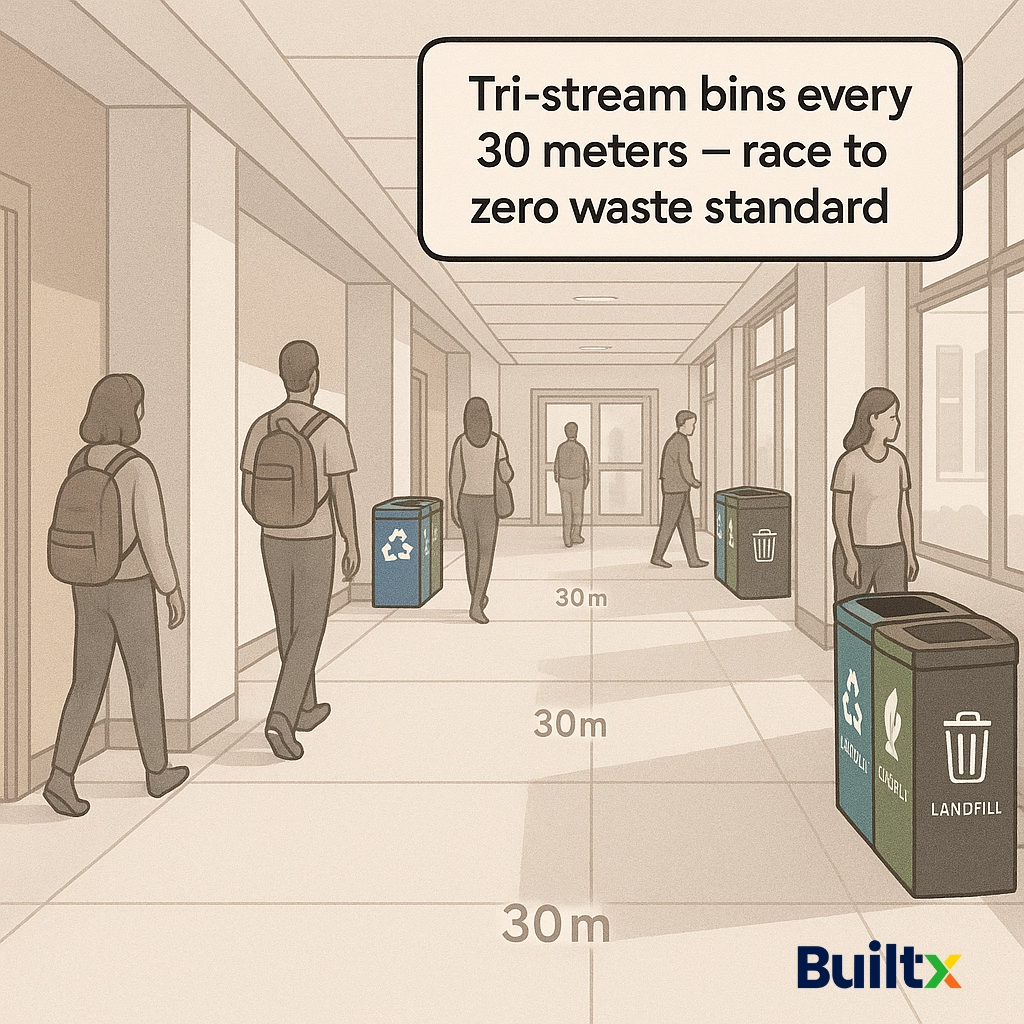
- Centralized composters sized at 0.1 kg/student/day.
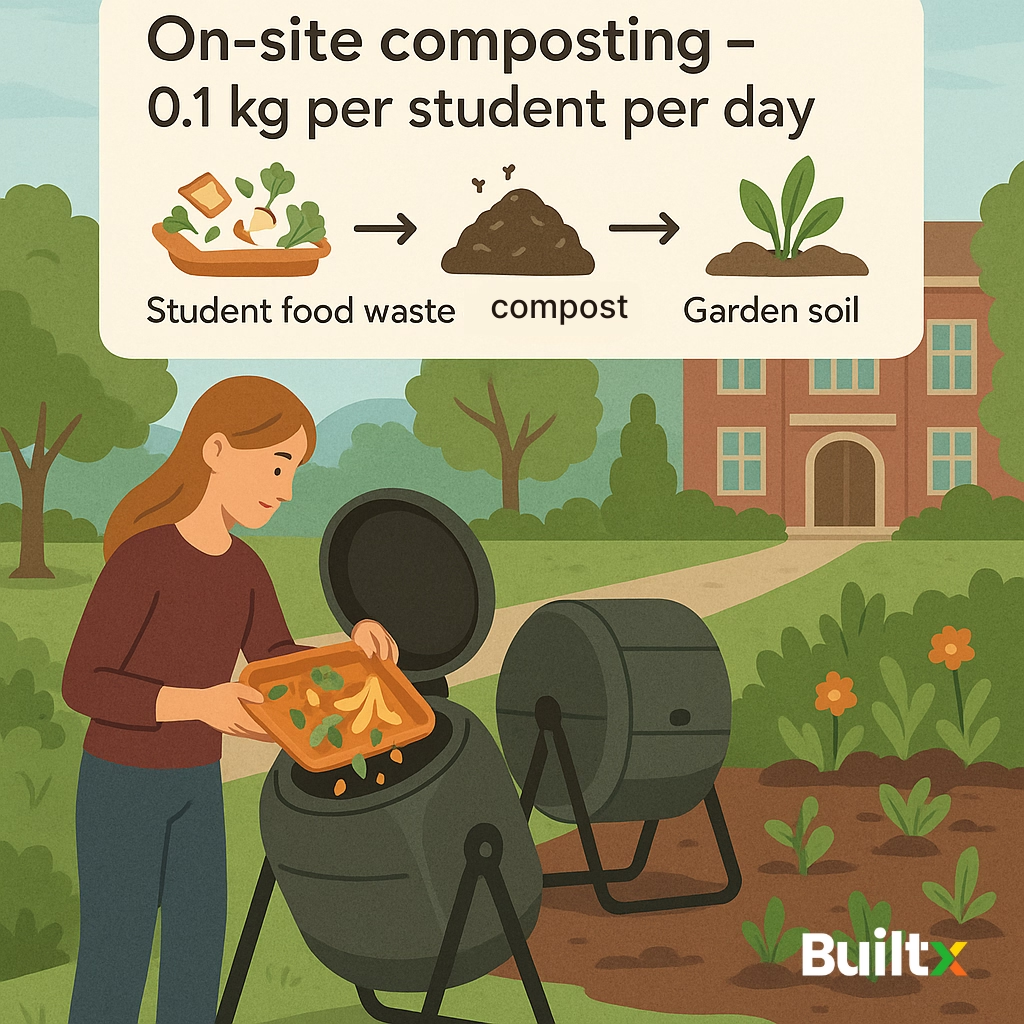
- Reverse-logistics hubs for e-waste & furniture re-use.
When UC Davis reimagined its transportation ecosystem, over 75% of its 40,000+ students began reaching classes without private cars. The strategy wasn’t just about infrastructure — it was about designing choice architecture where walking, biking, or taking an e-shuttle was more convenient than driving. [Source: SFGate / UC Davis TDM Office]
Key Moves to Replicate:
Target Modal Split for New Campuses:
- 60% Walk/Bike
- 30% E-Shuttle / EV Share / Micro-Mobility
- ≤10% ICE Vehicles (with future plan to phase to zero)
Bonus Insight: Adding secure end-of-trip facilities (bike parking, lockers, showers) increases cycling share by up to 30%, especially for faculty/staff.
University Accreditation Process Explained: A Complete Guide
The future of campus sustainability lies in real-time sensing and simulation. A Digital Twin isn’t just a fancy BIM—it’s a live, data-fed replica of campus utilities, buildings, occupancy, and environment.
UBC, Stanford, and NTU Singapore are already running campus-wide digital twins linked with:
- IoT sensors (sub-meter water/energy use)
- BAS (Building Automation Systems)
- Student dashboards
How to Build a High-Ranking University Campus in India (2025)
Key Functionalities of a Smart Ops Layer:
Stanford’s predictive systems helped them reduce energy demand by over 15% during peak-load periods (demand shaving through thermal storage + load shifting). [Source: Stanford Energy Systems Innovations]
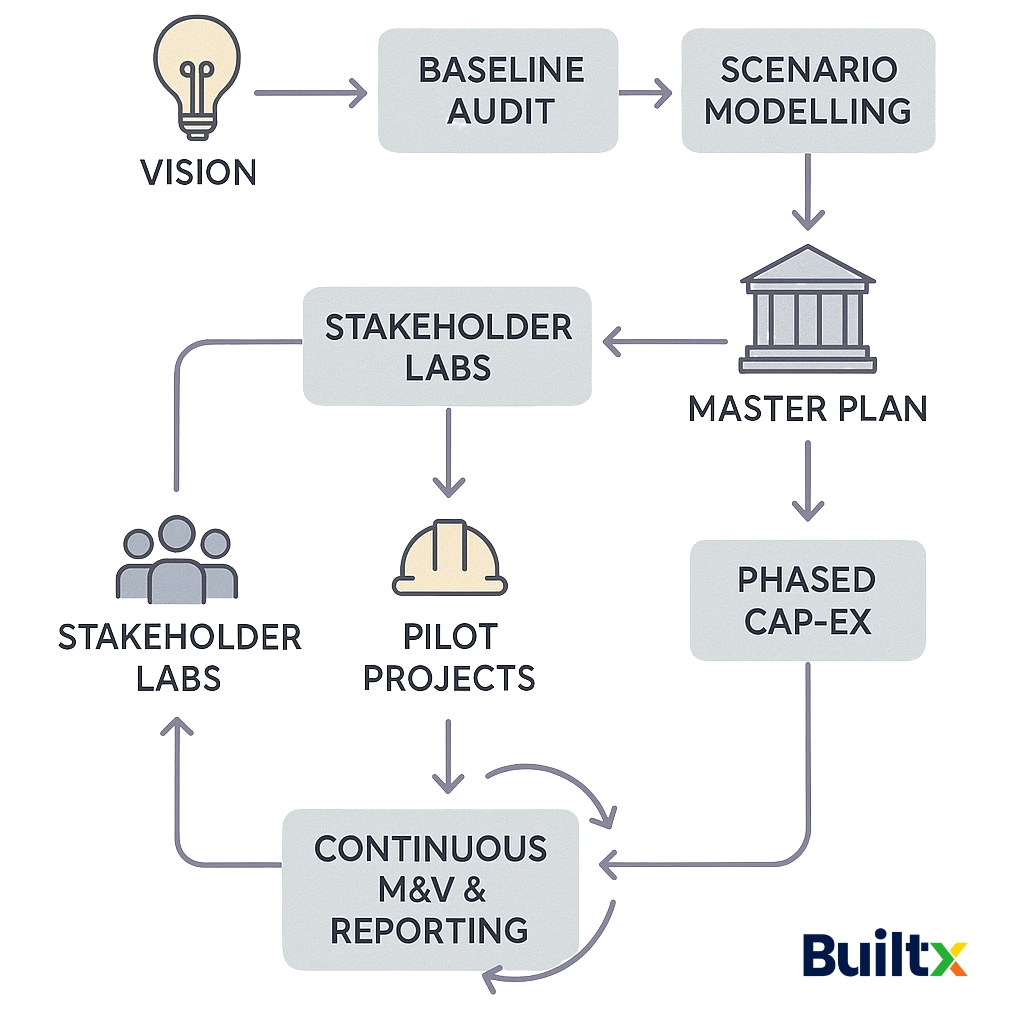
Each feedback loop feeds the next capital phase, locking in incremental gains toward net-zero.
Sustainable campus design means integrating land use, passive form, district utilities, and behavior into one efficient system. As seen at Stanford and UBC, such campuses become living labs for climate action.
At BuiltX, we help design university campuses across India that meet net-zero goals, cut water use, and eliminate waste—cost-effectively.
Planning a new campus in India? Talk to BuiltX and let’s create a campus that delivers real carbon and water savings.
